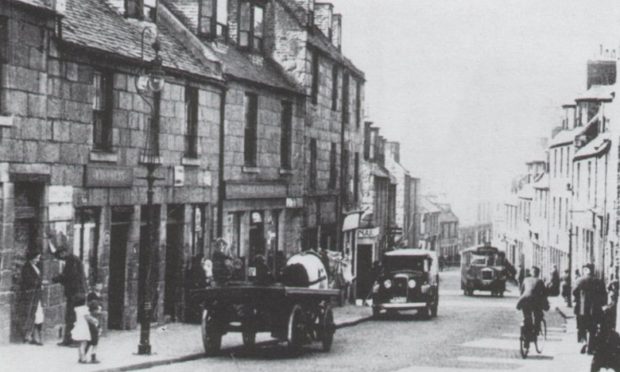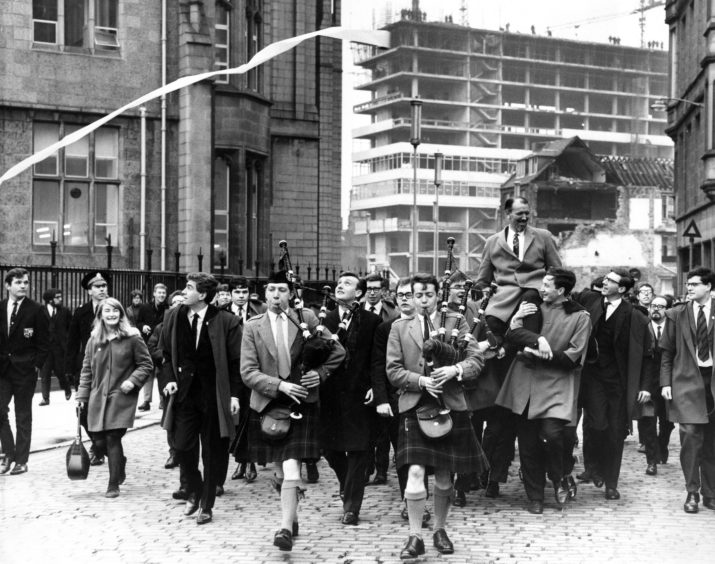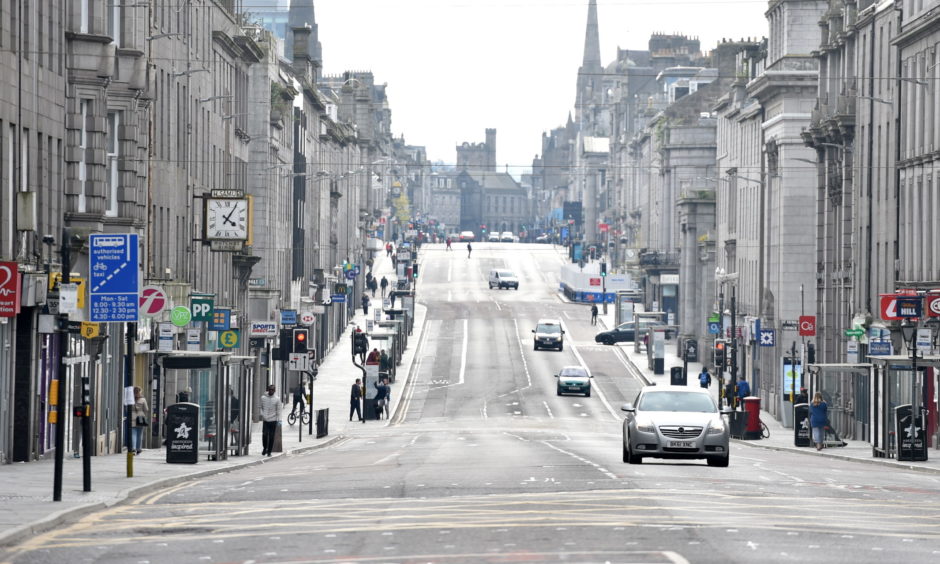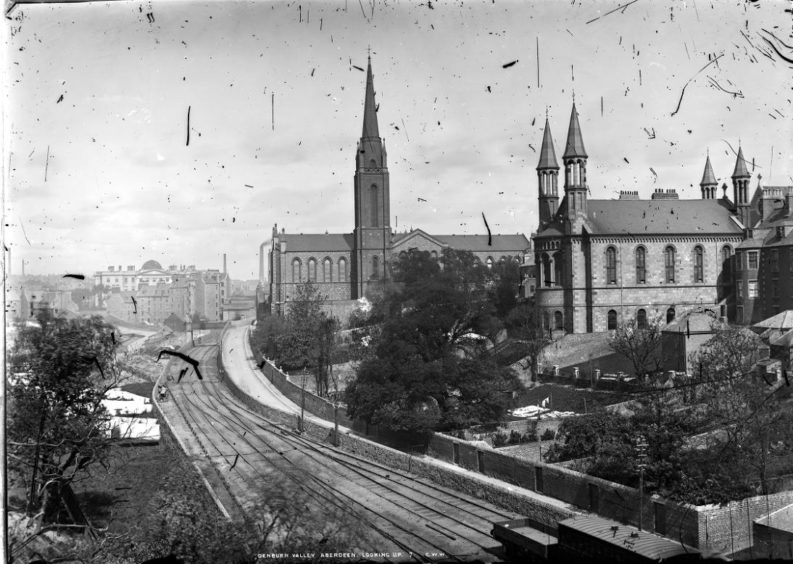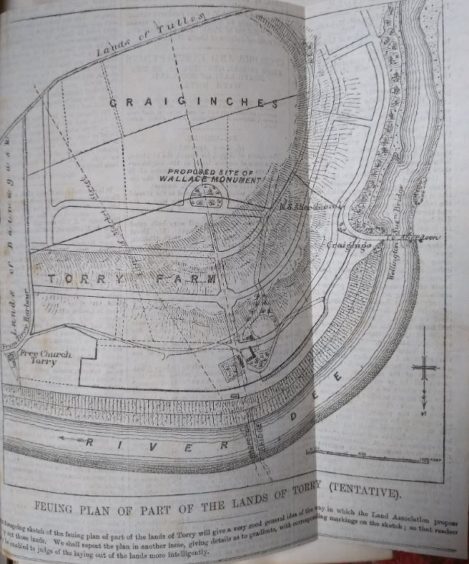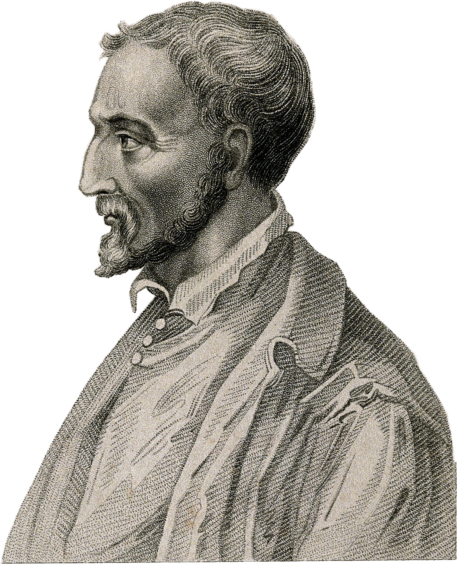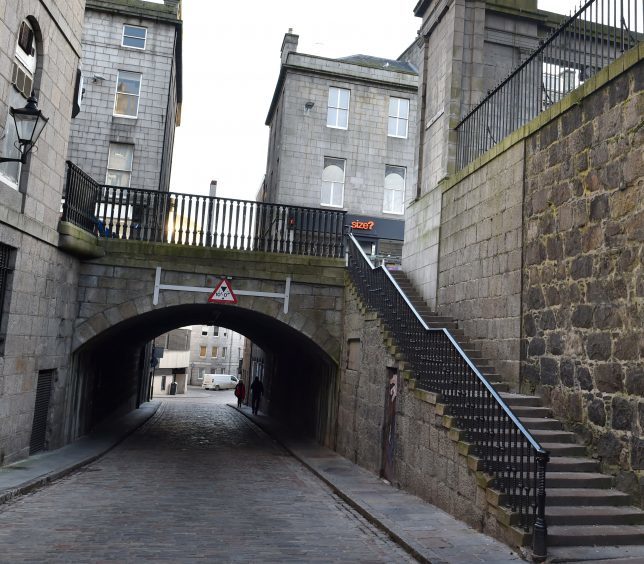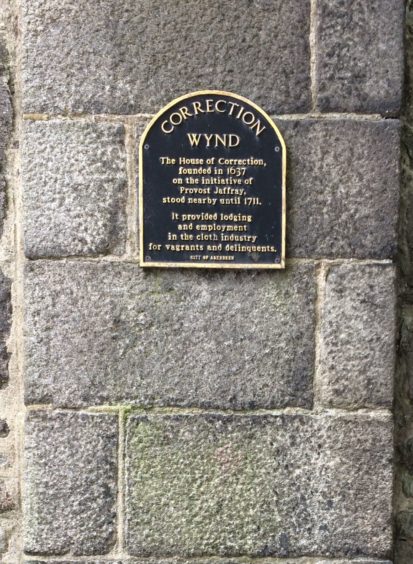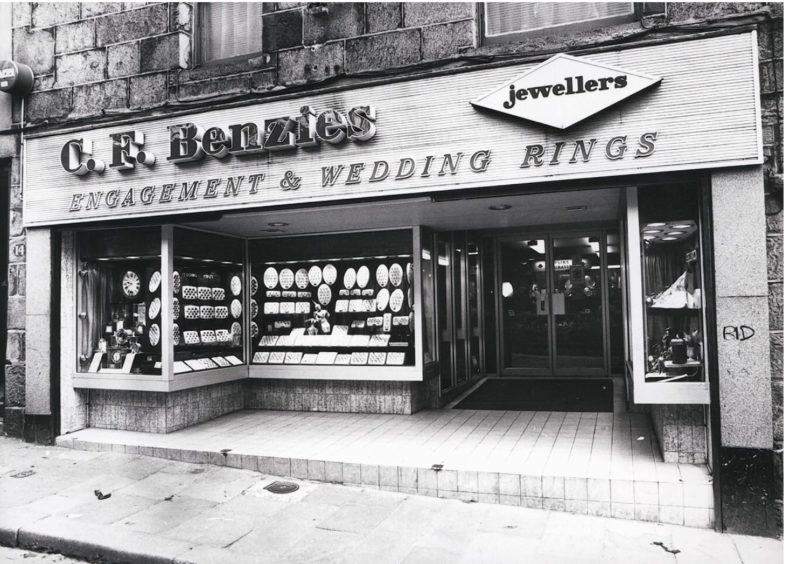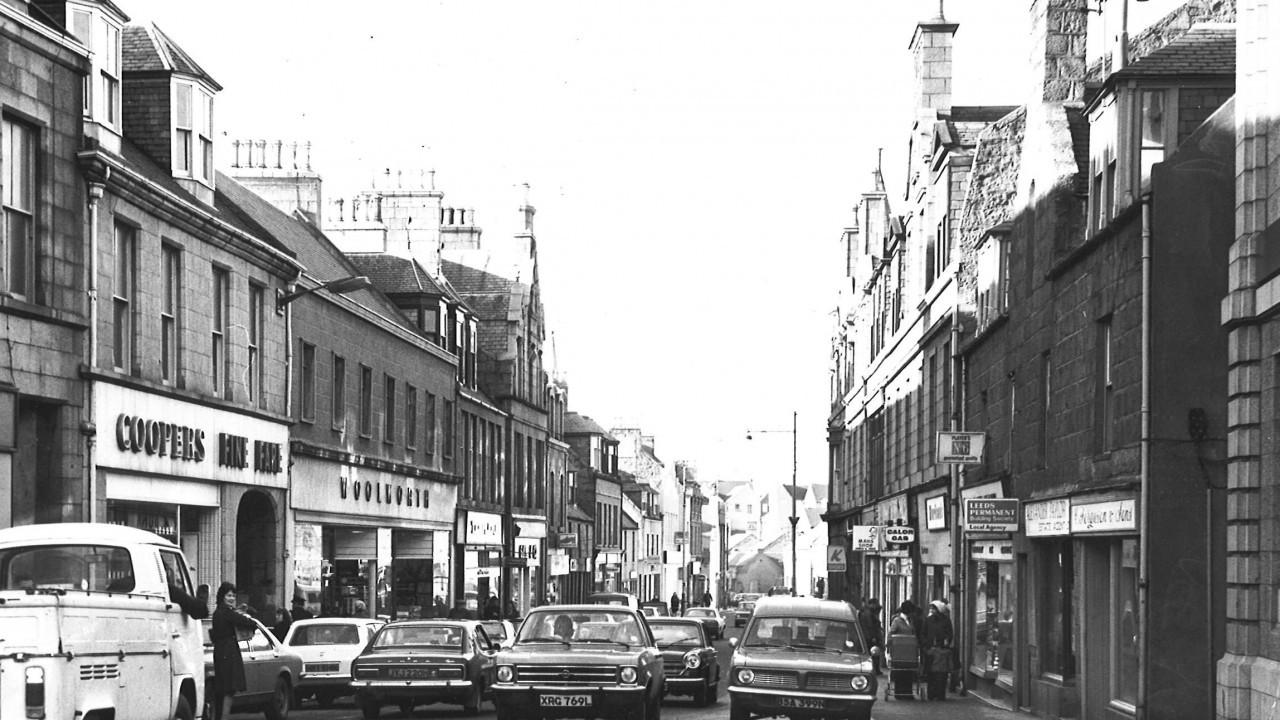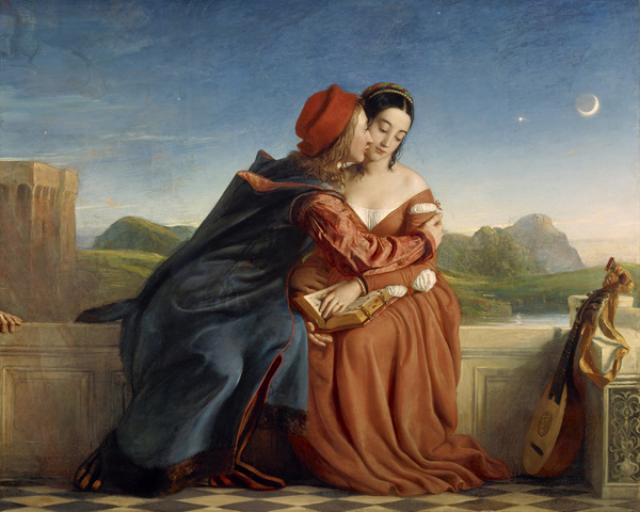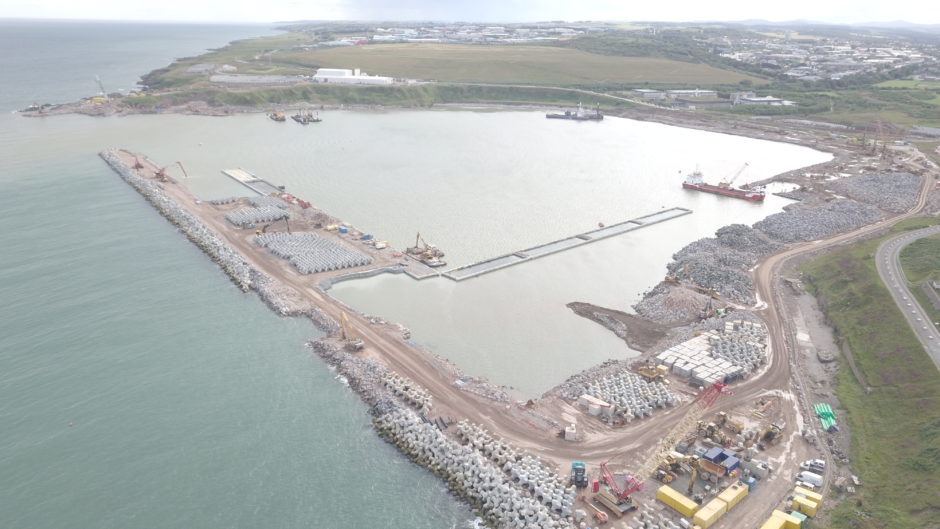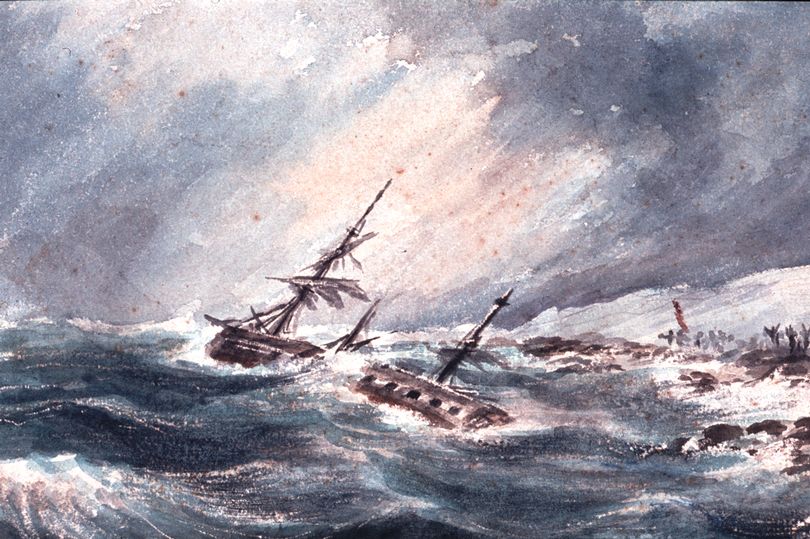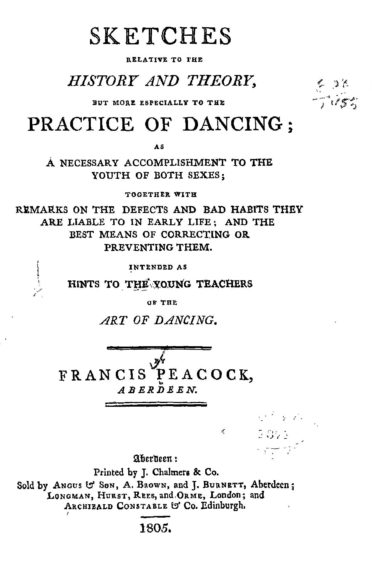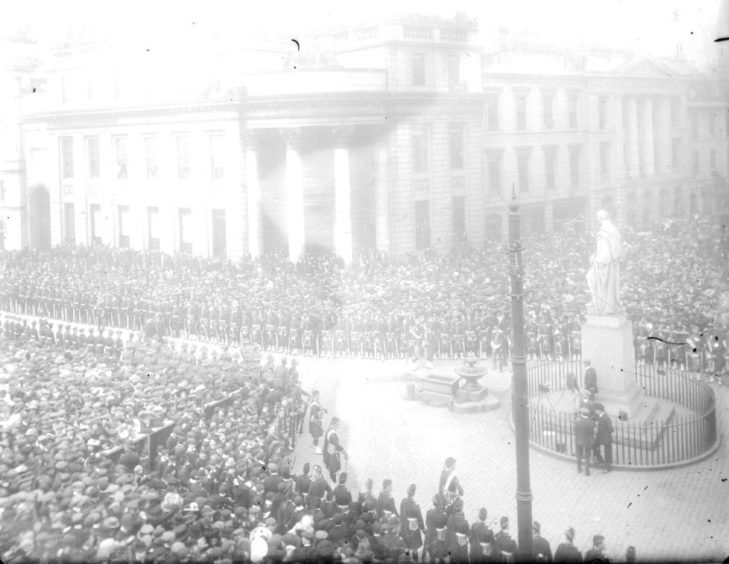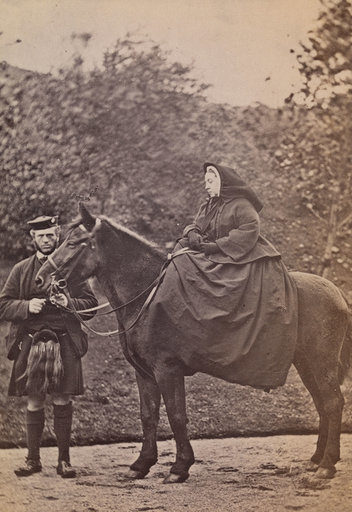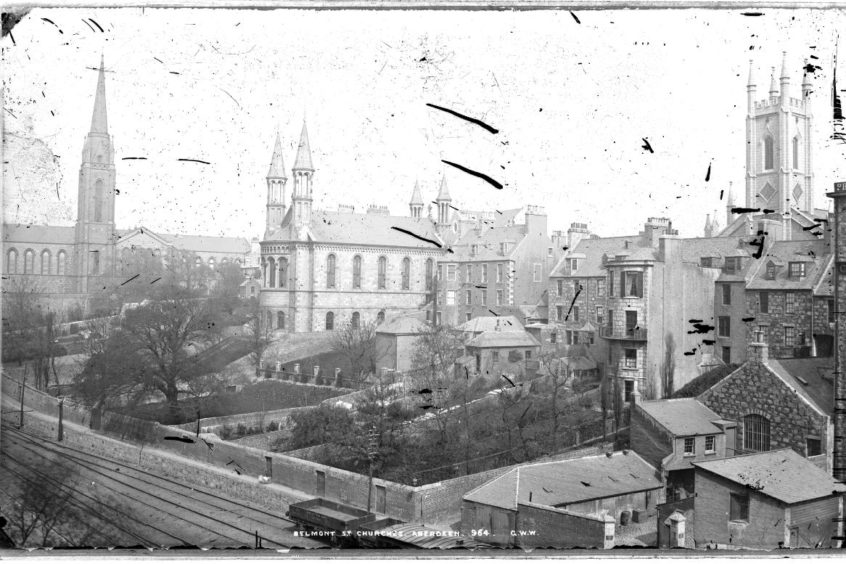Crime and punishment loom large in Aberdeen’s street names, whether they refer to Correction Wynd, Justice Mill Lane or the Gallowgate.
Yet, even while investigating the often colourful and descriptive history behind the names which adorn the Granite City’s avenues, crescents, courts and other civic locales, one former councillor and social historian has blasted previous political administrations for destroying what he believes could have been a site to rival anywhere in Scotland.
The Gallowgate
John Corall, the councillor for Midstocket/Rosemount from 2007-12 and Hazlehead/Ashley and Queens Cross from 2012-17 has examined a litany of street stories and unearthed a fascinating array of incidents, tragedies and tales of the unexpected all the way back to the 13th and 14th centuries.
But he remains frustrated at the manner in which the infrastructure of Gallowgate – a striking and distinctive part of Aberdeen’s past – has gradually been removed, ripped out or simply turned to rubble.
Mr Corall said: “The Gallowgate, which was the former main road to the North, would have rivalled or even bettered Edinburgh’s Royal Mile.
“It was considered ancient in 1515 and adorned with vividly painted Royal Arms, but was demolished as it hindered vehicular traffic.
“Little remains of the historic buildings or of the memory of dire deeds and the historical pre-eminence of this once famous thoroughfare.
“It has a wealth of history, but has been systematically destroyed with the council mantra: ‘its auld, ding it doon’.
“The ancient and most prestigious port of the town was cleared away as it was a hindrance to vehicular traffic, as was Mar’s Castle (also referred to as the Old Castle or Bishop’s Palace, which was a medieval fortification).
“The huge linen factory on Porthill that stood for 200 years, the 40 closes and courts, and the factory that lathered the Empire – known as Soapy Ogston’s – have all gone except for the small reminder, the Ogston and Tennant building, which is next to the Blue Lamp pub.
“Widespread slum clearance with no thought to heritage has unfortunately destroyed architectural gems that today, reinvented to satisfy modern needs and requirements, would make Aberdeen a major tourist attraction.
“I do feel very sad that we have destroyed so much.”
Charting the way in which Aberdeen’s streets developed
For centuries, visitors from the north entered New Aberdeen on the road past the Gallow Hill by way of the Spital, or from the north-west by the pathway past the hamlet of Gilcomstoun.
Whether it was a relatively numerous royal visitor or a hostile army, they all had to make their precarious way down Windmill Brae, across the Denburn and along the Green into the narrow alleys, closes and vennels of the town.
The Aberdeen of pre-Union Street was once witheringly described as “an assemblage of narrow, ill built and badly arranged thoroughfares without any good openings into the country, crowded with buildings and abominably filthy”.
The thoroughfares leading out to the Dee and also to the North were described as steep, rough, narrow and malodorous.
However, the explosive expansion over the Denburn in the Victorian era enabled the upper and middle classes to exhibit “a metropolitan polish”.
Aberdeen’s population increased from 35,000 to 100,000 between 1811 and 1871, but the area which the city covered only rose from 1,200 acres to 1,780 acres, even as the community landscape was dramatically transformed.
The 1880s brought expansion to Torry with the opening of Victoria Bridge and the council being granted new powers to bridge the burn at Ferryhill and build the Schoolhill, Rosemount and Esslemont Avenue viaducts over the Denburn.
That development has continued ever since and the population is currently around 230,000.
Many of the old streets have vanished, others have been refurbished or given a makeover, and their stories have been lost in the mists of time.
But here are some of the more quirky and remarkable cases, from the annals of history.
The unlikely Italian inspiration behind Carden Place
This name was chosen to honour Jerome Cardan, the Italian polymath who was one of the most influential mathematicians of the Renaissance, and was also proficient as a physician, biologist, physicist, chemist, astrologer – let’s pause for breath – astronomer, philosopher, writer….and gambler.
He visited Aberdeen in 1552 and his attention was drawn to a particularly good well which prompted him to think about how it could supply the town with water.
Given that he was one of the most influential mathematicians of the Renaissance, and wrote more than 200 works on science, his ideas were persuasive and and his plans meticulously detailed, but Cardan was reluctant to spend too much time away from his homeland.
It wasn’t until more than a century later that the springs of Cardenheugh were harnessed and conveyed water at a rate of 15-60 gallons a minute to a fountain in Castle Street, which was Aberdeen’s first piped public well.
Grim by name
A harsh fate befell those who ended in Correction Wynd.
Grim by name and grimmer by reputation, the House of Correction, an early style workhouse, was established in this unprepossessing street in 1637.
The council laid down a very detailed plan for the funding and building of the poorhouse and drew up a wide group of likely beneficiaries of their strict regime.
This comprised “all vagabonds, strong and sturdie beggares, idle and maisterles persones strong in bodie and habill to work, servants disobedient to maisteris, children disobedient to parentis, commoun scoldis, and wncorrigible harlottis, not amending to the discipline of the kirk”.
This often humiliating regimen of hard labour was eventually abandoned in 1711, but not before some notable cases of offenders being doled out astonishingly severe punishments.
One poor soul, a frail female was sentenced in July 1638 by the Kirk Session to be carted from the market cross to the Quay Head, then dooked, put in the Correction House and ordered to remain there to be whipped every Monday until May 1839.
What her offence was is not known, but the Kirk was notoriously harsh in their judgement of immoral women so it was probably for fornication and blaspheming.
Another woman, Margaret Warrack, was ordered to be detained in the House of Correction in 1640 until she confessed to the sin of fornication, with the sentence of a whipping at the stake expected to loosen her tongue.
The artistic genius who emerged in Marischal Street
This was Aberdeen’s earliest planned street, the first to be granite-paved and its neo-classical buildings, originally the homes of wealthy merchants, became iconic structures.
There was no public access to the quay between Futty Wynd and Shore Brae, so the town purchased the Earl Marischal’s house for £600 – around 1750 – with plans to demolish it to establish a roadway to the shore.
It became Aberdeen’s first bridged street and was laid out between 1766 and 1773 and then, in 1768, Bannerman’s Bridge was constructed over Virginia Street.
This bridge allowed Marischal Street to slope gently to the harbour, instead of dipping to meet Virginia Street.
Such use of engineering to overcome the landscape to allow regular street layouts was typical of the philosophy behind the Scottish Enlightenment, which many historians believe was instrumental in shaping the modern world.
Design was also important to a former resident of the street, William Dyce, a distinguished artist, designer and the father of the Royal Academy of Art in London.
But, as John Corral said: “His pre-Raphaelite style was appreciated everywhere – except in his home town.
“Madonnas, apparently, were not appreciated in Aberdeen at that time. He was born in 1806 at 48 Marischal Street, the son of Dr William Dyce, was given charge of the School of Design in Edinburgh, and was then invited to London, where he headed the newly-established Government School of Design, which later became the Royal College of Art.
“Although he is buried in the churchyard of St Leonard’s Church in Streatham, Dyce is memorialised on his parent’s grave in St Nicholas Churchyard.”
The tragedy which lies behind Oscar Road
On the morning of April 1 1813, five whalers were riding at anchor in Aberdeen Harbour when a sudden storm engulfed the city and the surrounding region.
Two ships weighed anchor and went to sea, but the Oscar kept near to land, so that her crew could be brought on board.
Eventually, the wind subsided, but it had created a heavy inshore swell and then the tide started to come in.
At the same time, another gale sprung up and despite the crew’s efforts to ride out the storm, the stricken Oscar was driven ashore in Greyhope Bay.
They tried to knock down the mainmast, so that they could scramble ashore, but it fell badly alongside the ship and all but two of the 44 men were lost in the ensuing disaster.
The crowds on shore could only watch on helplessly as the crew were swept away. One woman lost her husband and two sons and was left distraught and destitute.
Strictly Come Dancing inspired Peacocks Close
This has nothing to do with birds, but celebrates the life of Francis Peacock, who lived from 1723 to 1807 and taught dancing in the town for 60 years.
The council backed the activity as a means of giving young citizens “manners and good breeding” and the fees were six shillings and eight pence quarterly for every scholar.
The council had difficulty in attracting the right dancing master to educate their children.
Two people had originally answered their call and gave auditions in 1742, but the local authority was forced to re-advertise the post in 1746, while stipulating that the person should have “a sober, discreet and moral character”, and fees increased to seven shillings.
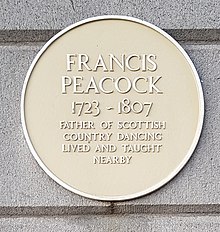
That was the cue for Mr Peacock, who filled the bill admirably and, for the next six decades, distinguished himself “by his genius for music and painting”.
He went on to compose and publish music, was a noted artist and became a person of considerable means and eventually bequeathed most of his considerable fortune to charity.
The Aberdeen icon who mapped Aberdeen’s Victorian streets
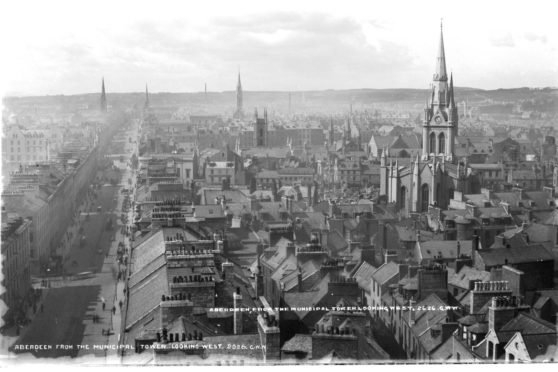
They are snapshots from a bygone age: a time when trams ferried people round Aberdeen and steam trains passed the Denburn en route to the many stations across the north-east.
They were all taken by the pioneering Victorian photographer George Washington Wilson, who was born in the Granite City in 1823 and vividly brought his home city to life.
Aberdeen University has a vast collection of images taken by Mr Washington Wilson, who began his career as a miniaturist, prior to switching to portrait photography in 1852.
He was famous for his images of members of the Royal Family in Deeside, including Queen Victoria with her loyal servant John Brown, but he also recorded a wide range of evocative scenes from civic locations including Union Street, Bridge Street and Belmont Street.
He also captured the poignant sight of massed kilted soldiers attending a commemorative ceremony on the Castlegate.
And he capitalised on receiving a contract to photograph the Royal family in their day-to-day life at Balmoral and Braemar and worked directly for Queen Victoria and Prince Albert.
All the while, he was also developing various techniques for the mass production of images as he adapted to mastering landscape photography in the 1860s.
By 1864, he claimed to have sold over half-a-million prints and he produced stereoscopic pictures whose main characteristic was that exposures were very short.
These have become increasingly popular in recent years and have been championed by the likes of Queen guitarist Brian May, who has created his own stereoscopic company, designed to highlight Wilson’s work in all its glory.
Mr May, who visited Aberdeen University in 2018 to help launch a new book about the Scot, written by his friend, Professor Roger Taylor, said: “I grew up fascinated by his work when I was a child and that passion for the subject has stayed with me ever since.
“George Washington Wilson photographed the unique beauties of the Scottish countryside in the 1860s with his stereoscopic camera. He was a genuine innovator.”
A university spokeswoman confirmed they have preserved the unique collection for posterity by digitising the thousands of images Mr Wilson bequeathed on his death in 1893.
That link between the past and the present means the public has now gained access to a vast treasure trove of photographs with details of when and where they were shot by Mr Wilson.
The spokeswoman added: “The George Washington Wilson stuff is brilliant. The university has his archive of glass plates and we have digitised them all, so that you can zoom right into the pictures to read the details on the adverts, the destinations on the trams and other details. It is a real treasure trove and we are proud of it.
“He continues to influence visual culture today and our students and academics are still inspired by his work through the university’s George Washington Wilson Centre for Visual Culture.”
Further details are available from www.abdn.ac.uk.
